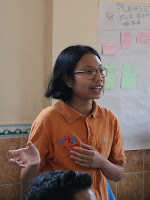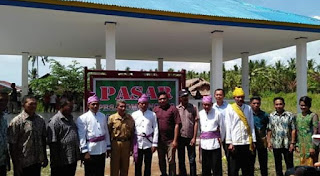There is a Batak term saying "Napurantano-tano Rangging Masiranggoman Tung pe Badanta Padao-dao Tonditta ma Masigomgoman" Tano = Land, Rangging Masiranggoman = mutually binding, Tung = really, pe = even, Badan = body, dio-dao = distant, tondita ma = soul. The translation will be "betel trees are growing on the ground, their trunks are mutually binding, even if our bodies are separated, our souls will remain united". Even though we are in a different location, but ultimately we remain united.
This philosophy is taken from the local culture where the people there are used to consume betel nut. Therefore, this philosophy is taken from the betel tree. If we observed this tree trunk, when it grows, stems and ends will meet or unite. Just like when we go to a remote location to migrate to work or study, finally someday we will meet again. This meaning provides hope for those who have differences either areas or language and culture, that actually the differences are complements and unites us. In regional beliefs it also means when the body/body is apart with the soul, one day they will meet again.
The betel tree which although live by riding on another plant, does not take nutrients from the plants it is living on. Even the beautiful heart-shaped leaves will actually beautify the plants that they are living on. It is a such symbol that we can learn that actually it describes peaceful coexistence among diversity existing in the land of Batak, even in the entire territory of Indonesia. As a symbol of harmony and peace, it is not surprising that certain traditional customs are often carried out and present betel leaves as a meaning of harmonious and not harmful life.
One more a unique of the betel tree is, this plant propagates from the bottom up which means that in life and work, everything must be started from the bottom slowly and then becomes higher without harming others. It is best for us to understand and appreciate our noble national culture in order to create a harmonious peace and unity to maintain our brotherhood. (RBN).









































































